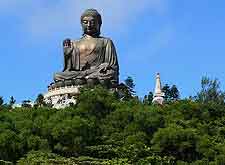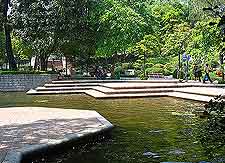Hong Kong History Facts and Timeline
(Hong Kong, China)

Once the British colonial darling of the Far East, Hong Kong has graduated into a thriving global hub of finance and culture all on its own. While its British ties have been severed since 1997, influences from that formative era linger all over this city.
Today, the history of Hong Kong is being shaped by the rare harmonious convergence of Chinese culture and Western perspective, with the city continuing to woo visitors from around the globe.
Chinese Imperial Roots
Hong Kong's history has been written since 214 BC, when the first emperor of China conquered the native Baiyue tribes who inhabited the island. During successive imperial reigns, Hong Kong was used as a trading outpost and military defence post to keep foreign invaders at bay, like the Mongols in 1276.
East India Company
The Portuguese were the first Europeans to land on Hong Kong in 1513, but their relationship with the Chinese did not get off to a good start. They were expelled and the ruling emperor, Kangxi, sealed off the island from foreigners until the East India Company arrived in Chinese waters by sea in 1699. This time the Chinese wanted trade with the West, and by 1711 the firm had established its first trading outpost in Canton (Guangzhou), about 80 km / 50 miles to the north-west.
The Opium Wars
Opium emerged as the main import into China, with the locals consuming some 2,000 chests of the narcotic annually by 1799. Eventually the Qing Dynasty saw the perils of this addiction and banned the import of opium. The result was the First Opium War (1839 to 1842) between Britain and China. In 1841, Hong Kong was officially occupied by British forces, opening the door on what was to become the British colonial era in Hong Kong history.

A British Colony
A year later, in 1842, China ceded Hong Kong to the British as part of the Treaty of Nanking. The town of Victoria City was founded soon after, giving rise to the modern history as we know it today. The Chinese tried to boot the British out yet again during the Second Opium War (1856 to 1860), but were defeated once more. Evidence of British military might can still be seen in the cannons along the fort, and these are fired off each day at noon to the delight of tourists.
In 1898, Britain signed a 99-year lease with the Chinese for Lantau Island and the surrounding New Territories. It was during the first half of the 20th century that British influence really settled over the local population. Education, trade and architecture all moved towards the British system, with the British style more or less intact today.
Chinese Once Again
When the British gave up Hong Kong in 1997, it was a rare example of a peaceful handover. Since then the city has continued in its prosperous ways, unhindered for the most part by mainland China's government.
The famous skyline of Victoria Bay is growing more slowly now that most of the land has been built up, although Hong Kong's local economy still thrives on a heady mix of global tourism, finance and Asian trend-setting chic.
 Once the British colonial darling of the Far East, Hong Kong has graduated into a thriving global hub of finance and culture all on its own. While its British ties have been severed since 1997, influences from that formative era linger all over this city.
Once the British colonial darling of the Far East, Hong Kong has graduated into a thriving global hub of finance and culture all on its own. While its British ties have been severed since 1997, influences from that formative era linger all over this city.